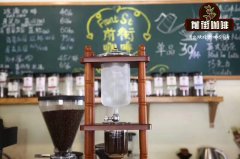The impact of TDS on coffee
Abbreviated as TDS, also known as the total amount of dissolved solids. The unit of measurement is milligrams per liter, which indicates how many milligrams of dissolved solids are dissolved in 1 liter of water. The higher the TDS value, the more dissolved matter the water contains. Total dissolved solid refers to the total amount of all solutes in water, including both inorganic and organic matter.
Coffee contains many tiny solids, which are the ingredients that make coffee taste. Or in other words, TDS digitizes the ingredients in coffee, which is closely related to the concentration of coffee.
In the coffee liquid we extract, the water used to extract coffee accounts for about 98% of the total coffee. As a result, in the extraction of coffee taste, there is a variable that is easy to be ignored, that is, the water used to make coffee, while the choice and use of water can influence the feeling of coffee in the throat.
Where PPM is the unit of TDS. PPM (part per million) is a unit of concentration of parts per million. Refers to the number of milliliters of solute in 1 million ml solution or indicates the number of grams of solute in 1 million grams of solution. It contains 1 gram of soluble substance in one ton of water. Both
The TDS value is too high, the minerals in the water are supersaturated, and there is not enough room to extract the flavor factors from the coffee.
It means that the more soluble matter in the water, the lower the extraction rate in the extraction of coffee body.
If the TDS value is too low, there are relatively few minerals in the water, which may cause excessive extraction.
It means that the less soluble matter in the water, so the higher the extraction rate of coffee.
At the end is a copy of the American Fine Coffee Association (SCAA) recommendations on the parameters for brewing coffee:
Smell: clean, fresh, no miscellaneous smell
Color: clear
Total chlorine content: 0 mg/L (acceptable range: 0 mg/L)
Solid content in water: 150mg/L (acceptable range: 75-250mg/L)
Hardness: 4 crystals or 68mg/L (acceptable range: 1-5 crystals or 17-85mg/L)
Total alkali content: about 40mg/L
Ph: 7.0 (acceptable range: 6.5-7.5)
Sodium content: about 10mg/L

Important Notice :
前街咖啡 FrontStreet Coffee has moved to new addredd:
FrontStreet Coffee Address: 315,Donghua East Road,GuangZhou
Tel:020 38364473
- Prev

What is ice drop coffee? What are the taste characteristics of ice drop cold coffee?
Professional coffee knowledge exchange more coffee bean information Please pay attention to the coffee workshop (Wechat official account cafe_style) Water drop coffee originated in Europe, through the natural infiltration of water pressure, adjust the speed of water droplets, slowly filtered with cold water, with 5 C low temperature extraction chain for 10 hours for a long time, let the original coffee flavor fax
- Next

Characteristics of coffee beans and recommendations for hand cooking in Kona, Hawaii
Kona coffee beans are produced in the Kona area of Hawaii. this kind of coffee beans can only be grown on volcanic slopes and belong to a rare variety. In addition to its beautiful scenery, Hawaii, a beautiful tropical Pacific island, also produces the famous Kona coffee. Kona Coffee is famous because its main producing areas are located in the south and north of the main island and the slopes of the Mauna Loa volcano. This
Related
- Beginners will see the "Coffee pull flower" guide!
- What is the difference between ice blog purified milk and ordinary milk coffee?
- Why is the Philippines the largest producer of crops in Liberia?
- For coffee extraction, should the fine powder be retained?
- How does extracted espresso fill pressed powder? How much strength does it take to press the powder?
- How to make jasmine cold extract coffee? Is the jasmine + latte good?
- Will this little toy really make the coffee taste better? How does Lily Drip affect coffee extraction?
- Will the action of slapping the filter cup also affect coffee extraction?
- What's the difference between powder-to-water ratio and powder-to-liquid ratio?
- What is the Ethiopian local species? What does it have to do with Heirloom native species?

